Takehiko was born in the castle town of Kagoshima (on the island of Kyushu) on July 2.

In 1884, at the age of 16, Takehiko left Kagoshima for Tokyo to live with his brother-in-law
Kiyosuke Oku, who was...
READ MORE
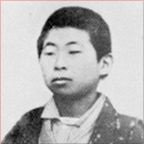 Takehiko in his boyhood.
Takehiko in his boyhood.

Takehiko was born in the castle town of Kagoshima (on the island of Kyushu) on July 2.
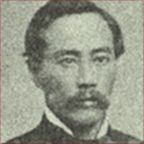 Kiyosuke Oku, Director of the Fisheries Bureau, Ministry of Agriculture and Commerce (Takehiko’s brother-in-law)
Kiyosuke Oku, Director of the Fisheries Bureau, Ministry of Agriculture and Commerce (Takehiko’s brother-in-law)

At the age of 16 he left Kagoshima for Tokyo to live with his brother-in-law Kiyosuke Oku, who was working for the Ministry of Agriculture and Commerce. Takehiko made preparations for higher education while doing Oku’s household chores.

Takehiko entered the Tokyo Vocational School (presently, Tokyo Institute of Technology) to learn machine engineering.
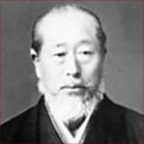 Yasuda Zaibatsu founder Zenjiro Yasuda (Meiji era)
Yasuda Zaibatsu founder Zenjiro Yasuda (Meiji era)
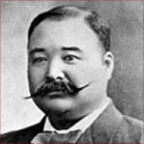 Korekiyo Takahashi as Minister of Agriculture and Commerce
Korekiyo Takahashi as Minister of Agriculture and Commerce

After graduation, Takehiko began working in the same place as his brother-in-law, in the Ministry of Agriculture and Commerce, as an assistant patent examiner. This is when he first met Korekiyo Takahashi, who would later become Prime Minister. Takehiko was introduced by Oku to Takahashi, who was a close friend of Oku and the first Minister of Agriculture and Commerce at the time.
When Takahashi was asked by Zenjiro Yasuda, the founder of Yasuda Zaibatsu, for the right person to dispatch to developed countries to bring back the knowledge and technology necessary for domestic nail production, Takahashi recommended Takehiko.

With the support of Yasuda, Takehiko traveled to Cleveland in the United States and immersed himself for one year in the study of machines for nail manufacturing. He also visited Germany to observe machine tools in an advanced nation.

Having amassed knowledge about developed nations’ technology, Takehiko returned to Japan at Yasuda’s request, and worked in various positions, such as financial manager of a railroad in Hokkaido, general manager of a shipbuilding company, etc.

Since he dreamed of being an entrepreneur, Takehiko returned to Tokyo to establish Yamatake Shokai Co., Ltd. Firmly believing that importing good machine tools from developed nations was essential to industrial development in Japan, Takehiko obtained distribution rights one after another from about 50 companies in the U.S. and Europe.

Because of a need for domestic production of oxygen, which is necessary for welding, Takehiko founded Nippon Sanso Limited Partnership Company (presently, Taiyo Nippon Sanso Corporation).

Takehiko founded Nippon Seiko Limited Partnership Company (presently, NSK Ltd.), which provided accurate machining using the machine tools that Takehiko imported.
On December 1, 1906, Yamatake Shokai opened in Tokyo. This date is now observed as...
READ MORE
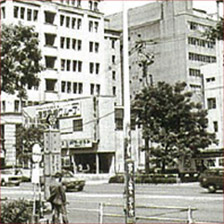 Original location of Yamatake Shokai
Original location of Yamatake Shokai

On December 1, Yamatake Shokai opened in Kyobashi, Tokyo City (presently, Yaesu, Chuo-ku, Tokyo). This date is now observed as the anniversary of the azbil Group’s founding.

Starting with a branch office in Osaka, the company gradually expanded its sales network, moving later into Nagoya, Fukuoka, Yokosuka, and Kure.

After the First World War began and the British Army sealed off the Mediterranean Sea, it became extremely difficult for cargo from Germany to reach Japan. Yamatake Shokai, which was relying on machinery from Germany, was faced with a challenge.
Takehiko, deciding that importing from Europe was becoming too difficult, resolved to seek import channels from the U.S., a newly industrialized nation.

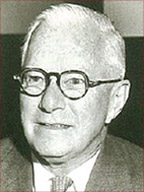 President Richard Brown
President Richard Brown

Takehiko traveled to the U.S. in October to visit local manufacturers. The visit paid off with Yamatake Shokai signing an agreement to act as the sole Japanese distributor for the Brown Instrument Company. The sale of imports from Brown began in 1920.
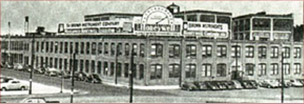 Brown Instrument Company
Brown Instrument Company

The Great Depression began on October 24th. Prices on the New York Stock Exchange fell precipitously, and Yamatake Shokai was faced with the greatest crisis since its founding.

Yamatake Shokai began assembling Brown’s industrial instruments. The main components of instruments were imported from Brown, while minor parts were of domestic manufacture, gathered from inside and outside of Yamatake Shokai.

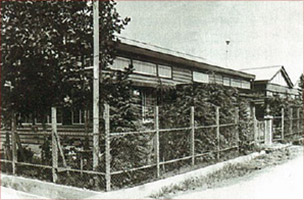 Yamatake Shokai Instrument Manufacturing Plant (Ohmori, Tokyo)
Yamatake Shokai Instrument Manufacturing Plant (Ohmori, Tokyo)

A factory called Yamatake Shokai Instrument Manufacturing Plant was constructed in Ohmori, Tokyo. At this point, Yamatake Shokai transformed itself from a machine tool import trader to an industrial instrument manufacturer.
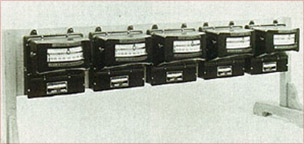 The first finished products assembled at Yamatake Shokai Instrument Manufacturing Plant using Brown’s components (1935)
The first finished products assembled at Yamatake Shokai Instrument Manufacturing Plant using Brown’s components (1935)

The Kamata Factory was constructed. Also, a company called Nihon Brown Keiki Co., Ltd., which was relatively small business at the time, was established specifically for instruments. Takehiko’s second son, Toshihiko, assumed office as its president. The name of the company was changed to Yamatake Keiki Co., Ltd., due to a wave of war-time sentiment in Japan during the Second World War.

On April 1, Yamatake Shokai changed its name to Yamatake Kogyo Co., Ltd. (kogyo = “manufacturing”, shokai = “trading company”) to meet the war-time rule that “trading companies must not be involved in manufacturing.” On April 27, the commercial department of Yamatake Kogyo separated to make an independent company called Yamatake Shokai Co., Ltd.
Yamatake Kogyo Co., Ltd., then absorbed Yamatake Keiki to make a new Yamatake Kogyo Co., Ltd. Takehiko became its president and Toshihiko its vice president.
In 1936, Takehiko, after studying foreign-made valves, successfully produced Japan’s first
top-and-bottom-guided double-seated control valve and...
READ MORE
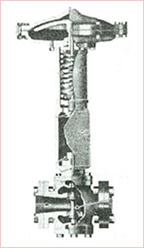 Top-and-Bottom-Guided
Top-and-Bottom-Guided
Double-Seated Control Valve

Takehiko, after studying foreign-made valves, successfully produced Japan’s first top-and-bottom-guided double-seated control valve and delivered it to Nippon Oil refinery in Akita. In the same year, the February 26 Incident (an attempted coup d’état in Japan) took place.

With the start of the Pacific War, the import of machines from the U.S. was banned. Yamatake shipped many industrial instruments to refineries, since the army and navy were planning new refineries at more than ten locations, and Nihon Sekiyu Co., Ltd., Showa Sekiyu Co., Ltd., and Maruzen Sekiyu Co., Ltd., were expanding their facilities one after another to meet increasing demand for petrochemical refining.

The war ended. The aftermath of the war was difficult and there was almost no demand for machine tools or industrial instruments. The company changed its articles of association and started to make general-purpose electrical devices in order to pay its employees.


A priority production system focusing on coal and iron & steel was adopted as Japanese economic policy. To meet the increased demand for industrial instrumentation, Yamatake began producing flow recorder-calculators and differential pressure transmitters as well as thermometers, pressure meters, carbon dioxide meters, etc.

A technology information magazine called Yamatake Times, the publication of which was suspended during the war, was once again issued. The magazine presented the current situation in important industries in the U.S., where many instruments were being used in highly efficient production management systems.

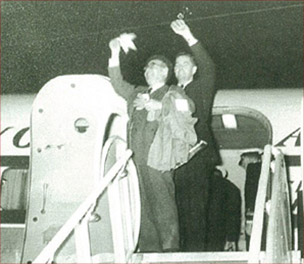 President Toshihiko Yamaguchi (left) leaving for the U.S. for negotiation with Honeywell
President Toshihiko Yamaguchi (left) leaving for the U.S. for negotiation with Honeywell

President Toshihiko Yamaguchi traveled to the U.S. and successfully concluded a technological partnership agreement with Honeywell, which had acquired the Brown Instrument Company. Since Honeywell dealt not only in industrial instruments but also in air conditioning devices, combustion control devices, and microswitches, these products and their technologies were introduced to Japan for the first time.
In the same year, a peace treaty between Japan and the Allied powers was signed in San Francisco.

Yamatake doubled its capital, which was 12 million yen at the time, the increase coming from Honeywell when the companies formed an equity-based alliance, the first with a foreign company in Japanese postwar history.

On April 1, 1952, the partnership between Yamatake and Honeywell received official
permission. Before any other Japanese company, Yamatake...
READ MORE
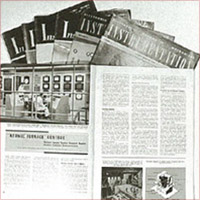 Instrumentation, Honeywell’s magazine on
Instrumentation, Honeywell’s magazine on
instrumentation technologies

On April 1, the technological partnership agreement between Yamatake and Honeywell received official permission. Before any other Japanese company, Yamatake established a partnership with a foreign company and started business as a comprehensive manufacturer of automation equipment.
The company conveyed the up-to-date information from Honeywell to customers in Japan and greatly contributed to promoting public awareness of process instrumentation.
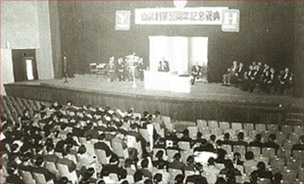 50-year ceremony held at Meguro Kokaido
50-year ceremony held at Meguro Kokaido

On the 50th anniversary of the founding of Yamatake, the company changed its name from Yamatake Keiki Co., Ltd., to Yamatake Honeywell Keiki Co., Ltd., in order to deepen the partnership with Honeywell.
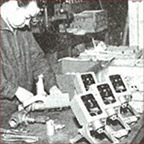 A worker assembling Modutrol motors.
A worker assembling Modutrol motors.

The company’s business was divided into the four areas of microswitches, industrial instruments, control valves, and control devices.
The Kamata Factory manufactured Modutrol motors, the first compact motors for control devices in Japan.
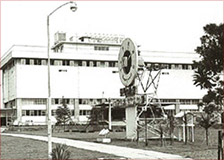 Fujisawa Factory building
Fujisawa Factory building

The Fujisawa Factory started operation in May.
The company’s founder, Takehiko Yamaguchi, received the Medal with Blue Ribbon, a Medal of Honor awarded by the Japanese Government.

Takehiko Yamaguchi died on April 11, at the age of 93, at his home in Kamakura. Takehiko lived to see his son and successor, Toshihiko, overcome many difficulties after the war and expand the company in association with the partner company of Honeywell.
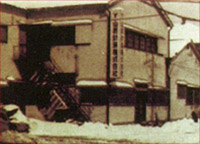 Tokyo operations office of Yamatake Keiso at the time of its launch (the headquarters was located in the Marunouchi Yaesu Building)
Tokyo operations office of Yamatake Keiso at the time of its launch (the headquarters was located in the Marunouchi Yaesu Building)

Yamatake Honeywell Keiki Co., Ltd., established a wholly-owned company called Yamatake Keiso Co., Ltd., to provide services such as air conditioning instrumentation, engineering, maintenance, and sale of control devices.

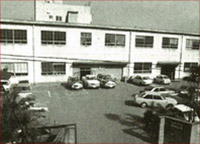 Yamatake Maintenance headquarters (Fukuoka)
Yamatake Maintenance headquarters (Fukuoka)

Yamatake Maintenance Co., Ltd. was established on September 27 in Fukuoka.


On the 60th anniversary of its founding, the company changed its name from Yamatake-Honeywell Keiso Co., Ltd, to Yamatake-Honeywell Co., Ltd.
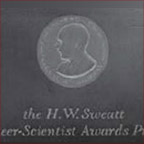 Sweatt Engineer-Scientist Award
Sweatt Engineer-Scientist Award
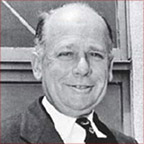 Honeywell Honorary President Harold W. Sweatt
Honeywell Honorary President Harold W. Sweatt

For the development of the CurrentroniK, Shinichiro Ogawa of Yamatake-Honeywell received the H. W. Sweatt Award, the first non-U.S. citizen to do so.


Yamatake-Honeywell was listed in the First Section of the Tokyo Stock Exchange on February 1.

Five Yamatake developers and engineers were dispatched to Honeywell’s Ft. Washington Factory on the outskirts of Philadelphia to take part in the TDCS2000/3000 joint development project.
In 1961, Yamatake began to manufacture Honeywell’s ETOS electrical analog instruments.
A group of ETOS sensors, such as electrical pressure transmitters, differential pressure transmitters,
temperature converters, and air pressure converters, were...
READ MORE

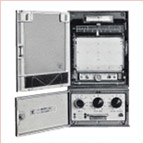 ETOS recorder/controller
ETOS recorder/controller

Yamatake began to manufacture Honeywell’s ETOS electrical analog instruments. A group of ETOS sensors, such as electrical pressure transmitters, differential pressure transmitters, temperature converters, and air pressure converters, were also manufactured in Japan. ETOS sensors were distinctive because of their 4–10 mA two-line signal transmission method and incorporation of transistors in all the functions to deliver fast and accurate responses. The concepts used in its development were so significant that they became standard in electrical instruments that followed.
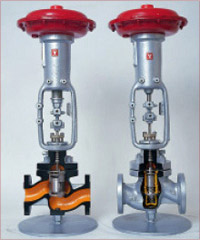 Cage-guided control valve (left) and low-noise control valve (right)
Cage-guided control valve (left) and low-noise control valve (right)

Yamatake began to market cage-guided control valves whose architecture was a world first, and very different from that of existing top-and-bottom guided control valves. Since this cage-guided valve was easy to use and of highly reliable quality with low noise, it became a huge hit.
In the 1970s, the rate of internal production reached 90 % of the total production and Yamatake’s control valve business ranked first among domestic manufacturers. It was recognized as a comprehensive instrument manufacturer who could supply everything from sensors to actuators.
 VSI (vertical
VSI (vertical
scale indicating
controller)

While considering how compact instruments should be designed in the new age of instrumentation, Yamatake chose to meet the need for space-saving, small instruments that could be easily monitored by operators, and it developed the VSI vertical scale indicating controller with new current-balancing circuits.
The PVSI pneumatic vertical scale indicating controller was displayed as a model product at the annual Measurement and Control Fair, and two years later in 1967, the N-matik series of pneumatic vertical scale indicating controllers was introduced. Its front panel measured only 2×6 inches, the smallest in the world at the time.

 TDCS2000 total distributed control system
TDCS2000 total distributed control system

The TDCS2000 total distributed control system, which is considered to be one of the largest technological innovations in the history of industrial instrumentation, was introduced. In addition to existing analog instruments’ PID control function, the TDCS2000 was equipped with advanced control, including high-performance calculating and sequence control functions, so it was able to meet various needs for functions such as batch process control as well as existing continuous control.
The age of digital instrumentation had come, and these products began to be introduced to advanced users like steel and iron plants and petrochemical refineries.
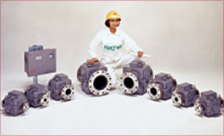 MagneW-M series electromagnetic flowmeters for general ducts
MagneW-M series electromagnetic flowmeters for general ducts
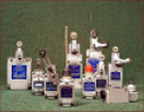 Highly rated limit switches
Highly rated limit switches

As environmental problems like water pollution increasingly came to light, Yamatake began selling MagneW electromagnetic flowmeters, which used a rectangular wave excitation method, and which attracted attention as a revolutionary flowmeter causing no pressure loss. In the 1980s, MagneW 3000Plus was selected for use by the Australian Alcoa company, the top alumina refining company in the world, a first step in the product’s global distribution.
Yamatake’s limit switches, which contribute to safety instrumentation, began to be highly evaluated around this time.

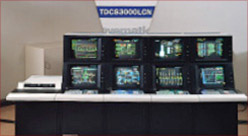 TDCS3000LCN
TDCS3000LCN

The TDCS3000LCN was announced to the world at the annual Measurement and Control Fair. This product was developed by the “Project 80” team, which was organized in the 1980s to work with Honeywell and develop a successor device to the TDCS2000.
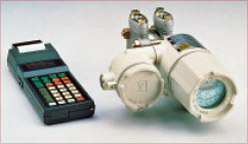 SFC (smart field communicator) and DSTJ3000
SFC (smart field communicator) and DSTJ3000

The DSTJ3000 smart transmitter went on the market. Together with the TDCS3000, the product was used by many petrochemical plants and chemical plants.
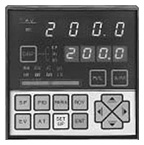 SDC200
SDC200

The DigitroniK SDC200 temperature indicating controller was introduced, laying the foundation for current temperature controllers. It sold so many units that production could not keep up.

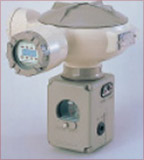 SGC3000 smart gas chronograph
SGC3000 smart gas chronograph

The SGC3000 smart gas chronograph, developed entirely with the company’s own technologies, including semiconductor sensor components, made its debut. It was made compact and lightweight so that it could be installed in the plant like a general transmitter, which helped to improve responsiveness, reducing installation and operation costs.
This product changed the image of existing chronographs for processed gas, as it was based on an entirely new concept, enabling users to handle it like a transmitter.
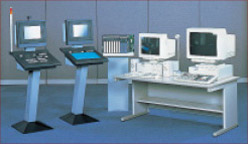 Harmonas
Harmonas

The Harmonas automation system, providing highly reliable communication and control with redundancy using duplicate hardware, became available.
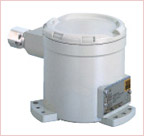 SES60
SES60
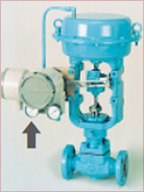 SVP3000 smart valve positioner
SVP3000 smart valve positioner
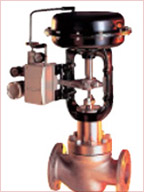 Compact control valve (CV3000 Alpha Plus Series)
Compact control valve (CV3000 Alpha Plus Series)

In response to Great Hanshin earthquake in January, the Japanese government instructed gas companies across Japan to equip their facilities with gas shutoff equipment that would automatically stop gas supply with shutoff valves activated by seismometers. Yamatake worked with Tokyo Gas to develop the intelligent SES60 seismometer in order to prevent secondary disasters due to gas leakage after an earthquake. Tokyo Gas and other gas companies began incorporating the device into disaster prevention systems at their facilities.
In the 1990s, the compact CV3000 Alpha Plus series of control valves, designed for work in densely piped industrial areas, such as fine chemical manufacturing, were developed and marketed, followed by the development of SVP3000 smart valve positioners, with a built-in microprocessor. These products had functions, such as online control of actuator range, and transmission of analytical data and valve position, which began the era of advanced functionality.

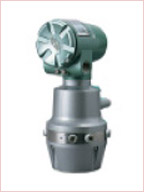 HGC303 Heat Value Gas Chromatograph
HGC303 Heat Value Gas Chromatograph

In response to natural gas trading based on calorific value, which began in the EU, the company announced the world’s smallest gas chromatograph, the HGC303, which was increasingly purchased by power plants and LNG carriers as its convenience was recognized.
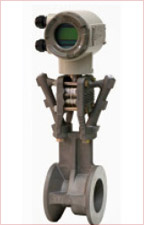 STEAMcube steam flowmeter
STEAMcube steam flowmeter
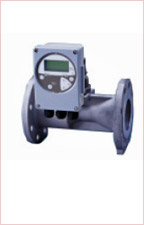 AIRcube air flowmeter
AIRcube air flowmeter

Low-temperature valves and AIRcube air flowmeters, which incorporated a multifunctional semiconductor differential pressure/pressure/temperature sensor, were introduced. In the following year, 2004, many devices, such as STEAMcube steam flowmeters, were introduced for energy management.
In the 2000s, the Industrial-DEO production control system was developed using an open architecture approach, which enabled the system to communicate with devices of different types and also with peripheral devices, whose technologies continually change.
System innovation continued to progress in the field, including improvement and optimum control of production, quality control, and energy and environmental management, and automation began contributing to society as a whole, including industry.
Around 1964, with the spread of computers and increased load from lighting, more and more buildings
began to need an air conditioning system even in the winter, and ...
READ MORE


With the spread of computers and increased load from lighting, more and more buildings began to need an air conditioning system even in the winter, and they also began operating 24/7/365. Against this background, control devices and building management systems began playing an increasingly important role in meeting the complex and diverse needs for building air conditioning systems.
For example, the NHK Broadcast Center had to operate continuously in order to manage around-the-clock broadcasting, and the Sony Building needed to air-condition the building in order to provide both its lighting equipment and visitors with cool air.

After the construction of Japan’s first skyscraper, the Kasumigaseki Building, there was a flurry of construction of super-high buildings, and urban areas were increasingly filled with high buildings. During the construction of high-rise-buildings in areas surrounding Shinjuku-ku, Tokyo, which is a symbol of the age of skyscrapers, many Yamatake products were used.
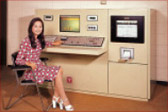 System 6J
System 6J

The System 6J central monitoring system was developed with a standardized central monitoring panel. Previously, central monitoring panels had been designed separately for each building. Since building facilities differ from building to building, it was believed to be impossible to standardize the central monitoring system. However, by standardizing the process of determining the specifications, trial runs, and service after delivery, Yamatake succeeded in spreading the product across Japan.

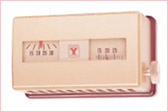 Room thermostat
Room thermostat
In the 1970s, air conditioners were no longer a luxury in Japan; not only office buildings and department stores, but also small cafés in towns and recreational arcades were fully equipped with air conditioning systems. The room thermostat on the right played a role in popularizing air conditioners in Japan.
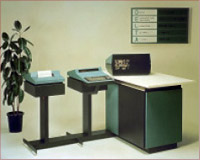 DELTA 2000
DELTA 2000

A new DELTA 2000 imported from Honeywell went on the market. Large and very high buildings were constructed on spacious grounds, and therefore their facilities became ever more complex. This led to a strong demand for centralized control of the facilities. To meet this need the DELTA 2000 was introduced as a central monitoring system that could provide integrated management of multiple buildings scattered around a region as well as large buildings like high-rises, and also could comprehensively manage the building’s air conditioning, electricity, sanitation, fire and burglar alarm, etc., facilities. The system had the extraordinary ability to control more than 20,000 items.
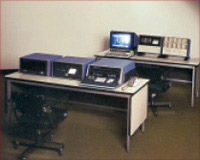 DELTA 2000, 500 Series (front)
DELTA 2000, 500 Series (front)
and 1000 Series (back)

Since the DELTA 2000 proved to be too expensive to sell in Japan, Yamatake considered domestic production of the system for small-sized and middle-sized buildings. It began developing the 500 series of DELTA 2000 (the DELTA 500), and announced the product’s availability in the same year.
As a result of oil crises in Japan in 1973 and 1979, the Japanese economy became sluggish, and public sentiment increased for energy efficiency in building air conditioning. The DELTA 500 was able to take advantage of this trend, since its recently developed microcomputers were capable of energy-saving control.


Yamatake on its own developed the SAVIC 200/500/800 building management system. The DELTA 2000 series, introduced from Honeywell, did not work well in Japan not only because of its price, but also because its specifications did not meet Japanese customers’ needs. Its greatest disadvantage was that it could not display text in the Japanese language. Consequently Yamatake developed the SAVIC 200/500/800, which could display lists in Japanese kana characters on CRT monitors.

The SAVIC-EC system for small-sized building management, which could control 100 items, was developed. The system communicated with control points at sites that were directly connected to the main EC unit. It had basic BA functions and energy-saving applications as well.
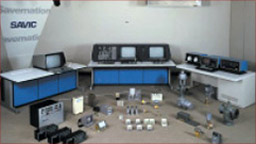 The SAVIC series and air conditioning control devices
The SAVIC series and air conditioning control devices
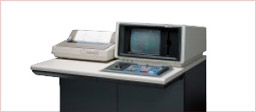 SAVIC 1000
SAVIC 1000
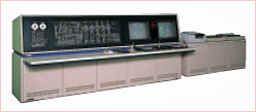 SAVIC 2000
SAVIC 2000

The SAVIC 1000 and 2000 systems for large-scale building management, which could control 1000 and 2000 items respectively, were developed with basic BA functions and energy-saving applications. The systems’ human-machine interface was capable of displaying text in Japanese kanji characters on CRT monitors.
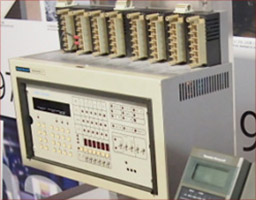 The PARAMATRIX- II, developed in 1984, is
The PARAMATRIX- II, developed in 1984, is
on display in Yamatake Memorial

The PARAMATRIX-II was developed. First-generation PARAMATRIX heat source controllers were developed in the 1970s. In Japan, which has four distinct seasons, replacing heat-source devices and changing the number of heat-source devices according to the changing seasons were important duties of building facility managers. Yamatake developed the unique PARAMATRIX-II, which could control heat sources flexibly.
The PARAMATRIX-II became a byword for heat source controller in the air-conditioning industry. After the PARAMATRIX-II, Yamatake continued developing successors, including the PARAMATRIX-III in 1998 and PARAMATRIX 4 in 2011.
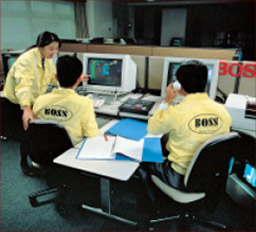 BOSS Center
BOSS Center

In October, the BOSS* Center, a remote monitoring building management service, was established in Tokyo. Demand for its services gradually increased, and in the following year, 1985, another BOSS Center started operations in Osaka.
*BOSS: building operation support service
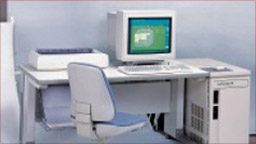 savic-net 50
savic-net 50
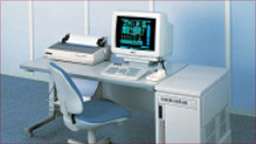 savic-net 20
savic-net 20

The savic-net 50 and 20 series were developed. Previous models had mainly operated air-conditioning facilities, but the system was now capable of integrated management of security, disaster prevention, lighting, etc., facilities in addition to air conditioning. Furthermore, it could work with information and telecommunication networks, and therefore could provide audio warning to system managers via a company’s PBX telephone system.

In the 1990s, the concept of an ecologically friendly city that is viable for future generations, called an “eco-city,” became increasingly popular. Instead of constructing many buildings with no plan, governments and people began discussing better urban development, including landscape conservation in cities and traffic planning.
The 1990s saw a transition from the mindset of constructing buildings haphazardly to urban planning, the typical examples in Japan being Roppongi Hills, Yokohama MM21, and Chiba Makuhari New City, all of which were specific areas redeveloped as a city within a city.
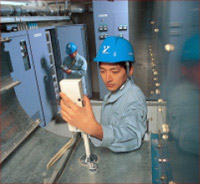 BESTMAN maintenance service
BESTMAN maintenance service

A maintenance service called BESTMAN went on the market, the name being an acronym for “building environment system technical management.” The system was based on the idea of preventive maintenance, in which devices are maintained based on anticipation of problems instead of being repaired after problems were found. It is a functionally systematized group of services including maintenance, guarantees, and parts management.

In October, Yamatake began providing energy service company (ESCO) services. In order to strategically address customers’ challenges, such as cost reduction, environmental preservation, and stable operation of facilities, Yamatake began offering temsTM (a total energy management service) to provide best solutions tailored to customers’ needs, including operational support for optimal management of building facilities, assessment, suggestion of plans for improvement, energy-saving renovations, and even procurement of various types of energy.
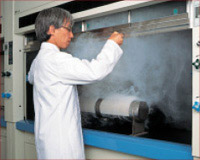 Critical environment control system
Critical environment control system

Yamatake began business in the area of critical environments, where high-quality treatment of air is vital and ventilation is the main concern of customers, such as chemical research facilities, animal rearing facilities, bioscience labs, and hospitals facing the risk of infections.

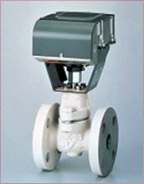 Actival
Actival
In 2002, Honeywell sold all its shares to Yamatake, and Yamatake began business development on its own. By way of business development measures, Yamatake decided to reduce costs with production sites in China, while developing and marketing high value-added products.
A compact and lightweight device with valve and actuator functions was developed and sold beginning in the mid-1980s in Japan, and production was launched in China in the 2000s by Dalian Yamatake Control Instruments Co., Ltd.
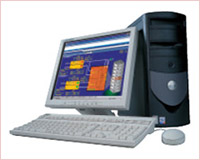 savic-net™ FX
savic-net™ FX

The next-generation savic-net™ FX building management system was placed on the market. Yamatake offered customers a superior system based on its key capabilities of monitoring buildings regardless of place and time, selecting any monitor station type, and selecting functions regardless of building size.
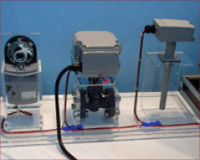 Intelligent Component Series
Intelligent Component Series

Yamatake developed the Intelligent Component Series of control devices, which could handle an increased amount of data with more sophisticated basic measurement and control functions. The origin of the name was the ability of these components to retain device data and control data and to adapt their behavior according to the environment.